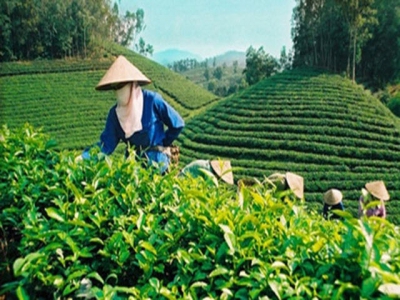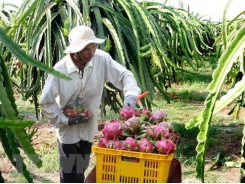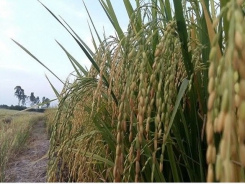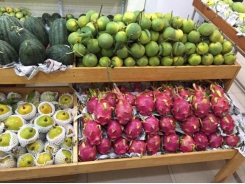Vietnamese tea finds flavour of growth in new world tastes

While Vietnam’s tea industry is known around the world, in reality, Vietnam only really exports tea to easy markets like Pakistan and China, while its shares in more stringent markets such as the EU and US are quite modest.
Vietnam shipped 13,000 tons of tea worth US$23 million in June, bringing the total tea exports in six months to 58,000 tons, worth US$94 million, down 8.7% in volume and 3.4% in value against the corresponding period last year.
According to the Agro Processing and Market Development Authority (AgroTrade) under the Ministry of Agriculture and Rural Development, the key export markets for Vietnamese tea in the period were Pakistan, Taiwan, Russia, China, Indonesia and the US.
The Taiwanese market boasted the highest growth (up 12.7%), followed by the US, Malaysia, and Saudi Arabia.
The average export price also grew by 5.8% compared to the same period last year.
Saturation of the world market
Nguyen Quoc Toan, head of AgroTrade, says the world market has reached saturation point, which is one of the main causes of the recent decline in the volume of Vietnamese tea exports. However, the average price of exports has gone up, showing that the value of Vietnamese tea is still rising on the international market.
A report by the Food and Agriculture Organization of the United Nations (FAO) on the reality of the global tea industry and the medium-term forecast to 2024 shows that the value of the global tea market increased from US$13.85 billion in 2015 to US$15.21 billion in 2017 and is forecast to reach US$21.33 billion in 2024.
In the general picture, the global tea trade saw an average annual rate of growth of 4% over the past three years.
China’s production accounted for a significant proportion of the growth in the international tea trade, making up 38% of the global output. While there has been an increase in production, world demand is falling, leading the global transaction volume to drop to 5 million tons per year.
Intensive investment in processing technologies
Tea has many health benefits but overuse of tea may bring about certain negative side effects. World research shows that drinking too much green tea can increase the risk of developing lung, rectum and oesophageal cancers. In addition, tea may cause some problems such as high blood pressure, chronic insomnia, anxiety and stomachache.
As consumer demand has evolved, the world’s leading tea exporters have followed, shifting from traditional tea products to modern drink blends to reduce the side effects or producing high-grade tea which has fewer harmful side effects. The wider presence of tea products with new flavors such as lemon, mint, and chocolate has offered the tea market a facelift at a time when it was growing tired.
Producers invested in an advertisement campaign to promote the health benefits of traditional tea which has helped to boost the global market share of high-grade tea.
Customers’ tastes are changing, while top-quality tea is much sought after by customers in big tea production countries, where low cost teas dominate the market. In many countries the price of export tea is higher than it previously has been thanks to innovation in tea products.
At present, the price of high-grade tea stands at US$5 per kilo in Sri Lanka and US$4.5 per kilo in India, while the price of traditional tea in India ranges from US$2 to US$2.5 per kilo.
Vietnam is the world’s seventh largest tea producer and the world’s fifth largest tea exporter, with more than 500 production and processing units with an annual capacity of more than 500,000 tons of dried tea. However, the price of Vietnamese tea is roughly equivalent to half the world’s average price.
Experts say Vietnamese tea products are failing to adequately satisfy the standards for food, pesticide residues, and heavy metals. Pakistan put forth strict hygiene and safety rules, requiring that exporters present an Aflatoxin certificate, resulting in a decrease in the volume of sales to the country.
To increase tea exports in the coming times, AgroTrade advises producers and exporters to make smart investments in developing the chain of value and to focus their attention on meeting food hygiene and safety standards to improve the image of Vietnamese tea.
Businesses will need to make further investments in intensive processing technologies and novel drink flavours to broaden their product range while reducing caffeine content and lessening harmful side-effects to keep pace with the changing world of customers’ tastes.
Related news
Tools

Phối trộn thức ăn chăn nuôi

Pha dung dịch thủy canh

Định mức cho tôm ăn

Phối trộn phân bón NPK

Xác định tỷ lệ tôm sống

Chuyển đổi đơn vị phân bón

Xác định công suất sục khí

Chuyển đổi đơn vị tôm

Tính diện tích nhà kính

Tính thể tích ao




 HCM City Party leader urges higher status in…
HCM City Party leader urges higher status in…  Cần Thơ told to build brand names for…
Cần Thơ told to build brand names for…